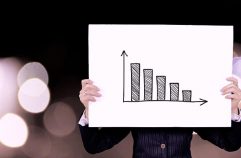When it comes to creating a new WordPress website, a lot of inexperienced webmasters do things which make their new site slow and unresponsive. Having a slow site can be harmful for a number of reasons. It can reduce visitor number, can increase your bounce rate, and worst of all, it can decrease your search engine rankings.
Slinky Web Design advise that if you are really serious about having a decent WordPress website which brings in a bit of money, then you need to do everything that you can to make your pages load faster. Anything over a couple of seconds is considered slow by many internet users, and websites with slow load speeds will simply be abandoned by impatient users who would rather move onto the next website instead of waiting for yours to load.
With this in mind, here are our top five tips for making your website load faster:
1. Get rid of old plugins!
Old plugins are one of the worst things possible for your website. They use up valuable server resources without doing anything useful, and they are almost definitely slowing your site down. Getting rid of these will help speed your website up straight away.
2. Use a decent hosting provider!
If you want your website to load faster than average, don’t get tricked into using a cheap hosting service. Services like this are usually overloaded, don’t really have enough resources, and don’t allocated a lot of server space to you. This means that it can take a long time to retrieve and load your website from the server, slowing your site way down.
3. Minimise your code:
Everytime your website loads, it runs a whole lot of code. This allows it to do things like call up images, load text, and set everything out properly. If your code is unnecessarily complex and padded out with useless stuff, then it could be worth contracting a coder to cut it down for you. Doing so will help your site load faster and should help reduce bounce rates.
4. Use website caching:
When someone visits your website, they will have to download everything – all of the images, the text, your logo, all that sort of thing. If you enable caching, then a copy of your website will be saved on the visitor’s web browser for next time they visit. This will mean that, after the first time, your site will load much quicker for them.
5. Optimise images:
If you use large, high-resolution images, your website will be slow. Every single time a page loads, the images have to be retrieved from the server and loaded onto the page. If you can make them smaller and more compact – by using a plugin, or in some other way – then your pages will load faster.
The above five things are just the tip of the iceberg when it comes to optimizing your website’s page load speed. Do your own research, and if you still aren’t sure, consider contracting the services of a professional web designer to speed your site up – it will be worth it!




